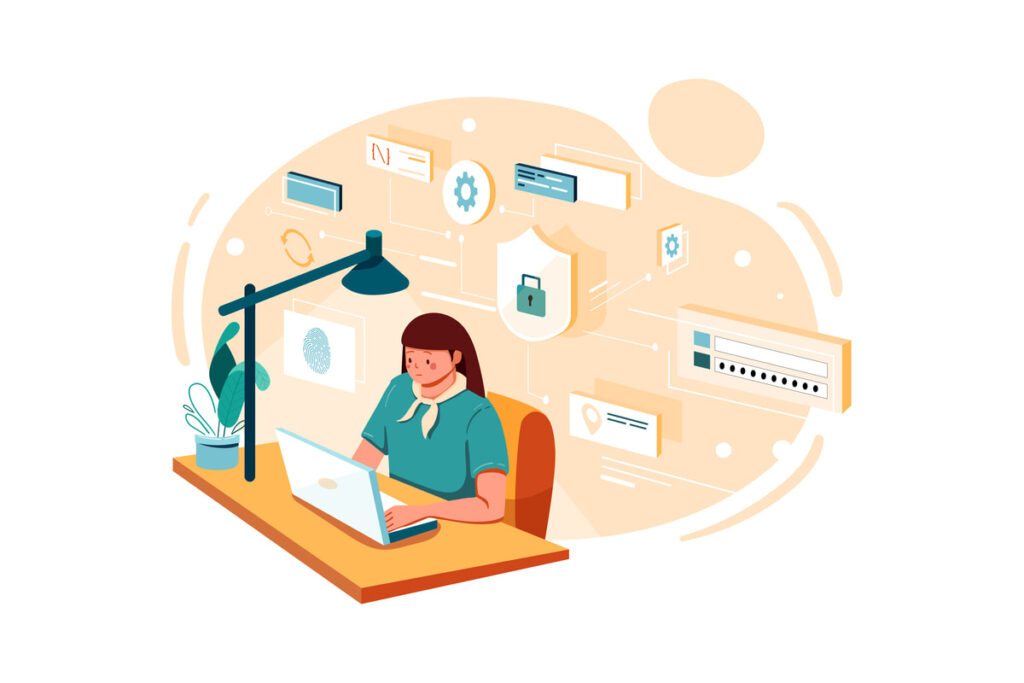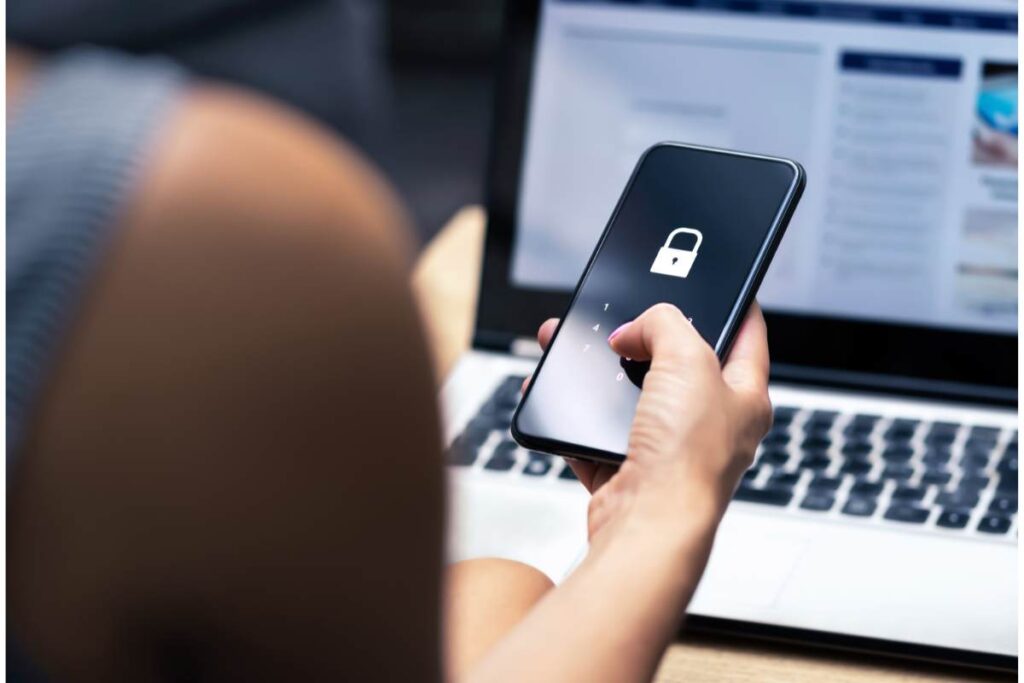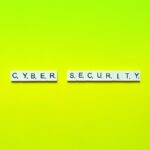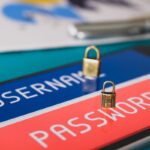Empowering Employees with Essential Cybersecurity Tips: Safeguarding Your Digital Workplace

As more and more of our lives shift online, we must proactively safeguard our data from hackers. Here are some crucial pointers: We can help you support and strengthen your team while protecting your business from potential cyber threats.
1. Make secure passwords and save them securely.
A strong password is the first line of defense against any cyber attack. Ensure your staff members use a combination of letters, numbers, and symbols to create passwords that are at least eight characters long. Additionally, it’s crucial to update your passwords routinely and to avoid using the same one across many websites. Employees should use a password manager or write their passwords securely to keep them safe.
2. Use caution when clicking.
Phishing emails are one of the most popular ways attackers infiltrate networks. These emails are from a reliable source while attempting to deceive the receiver into clicking on a harmful link. Teach your staff to exercise caution when clicking links in emails, even if they appear to be from a reliable source. They can linger over the link to check where it leads them before clicking if they need clarification.
3. Maintain software updates.
Ensuring all of your current software is one of the best methods to safeguard your machine from assaults. Attackers frequently use security flaws that have been patched in more recent software versions. To avoid worrying, set up automatic updates for your operating system and all other software you use.
4. Use security tools
Various security technologies are available that can assist in defending your system from intrusion. Firewalls, intrusion detection systems, and antivirus and anti-malware software are a few examples. Ensure your staff members are knowledgeable and current on these tools.
5. Create a data backup.
It’s critical to keep a backup of your data in case your system gets compromised. In this manner, you can swiftly recover your system and resume operations. Employees should perform regular data backups.
How to Protect Your Digital Workplace
There are a few important considerations when protecting your digital workplace.
Two of the most crucial are listed below:
1. Maintain Account and Device Security
Never reuse passwords, and make sure to use strong passwords for all of your devices and accounts. It’s a good idea to set up two-factor authentication. By asking you to enter a code from your phone in addition to your password when logging in, this adds a degree of security.
Additionally, exercise caution while sharing information on social media and online. Cybercriminals can use these details to access your accounts or even your place of employment.
2. Exercise Caution When Opening Email Attachments
Phishing emails are one of the most typical ways that cybercriminals access businesses. These emails look official but are from scammers attempting to steal your personal information.
Even if an email and its attachments appear from a reputable source, you should exercise extreme caution before opening them. To verify that the email is authentic, you may contact the individual or business directly if you have any doubts.
You can protect your digital workplace from fraudsters by using these two steps.
Advice on Developing Your Staff
The weakest link in cybersecurity is frequently found to be workers. They must know more about online risks or the best ways to protect their data and business. Employers must take action to empower their staff members and educate them on the value of cybersecurity.
Here are three suggestions for achieving that:
1. Inform your staff of the dangers posed by cybersecurity attacks.
Ensure that your staff is aware of the risks associated with cyberattacks and the significance of cybersecurity. Inform children about the different types of attacks and the precautions they can take to stay safe. Make sure to stress how crucial it is to protect their personal information, as well as how crucial it is to avoid clicking on links or opening attachments from untrusted sources.
2. Put security measures in place to safeguard your data.
You should protect your data and teach your staff about the dangers of cyberattacks. Put in place robust security measures like data encryption and two-factor authentication. These safety measures will protect your data even if one of your employees misplaces or loses their device.
3. Encourage staff members to report any shady behavior.
Ensure your staff knows they should contact you or another manager if they notice any unusual conduct. Please encourage them to be on the lookout for any suspicious communications or online behavior. Employees can aid in preventing cyberattacks by reporting any unusual behavior.
These pointers can help you empower your staff while safeguarding your data. It’s crucial to ensure that your employees know the risks and the precautions they can take to protect themselves because cybersecurity is a shared responsibility.

Why it’s Important to Protect Your Digital Workplace
Protecting your digital workplace is more crucial than ever as the world moves more and more online. It’s critical to safeguard yourself and your business against cyber dangers because so much of our lives and work are now online.
The following four factors make protecting your digital workplace so crucial:
1. To safeguard your data
Protecting your data is one of the most crucial reasons to secure your digital workspace. Your company’s data, whether consumer, financial, or staff, is a precious asset that needs to be safeguarded. It can be accomplished in several ways, such as encrypting your data, employing strong passwords, and purchasing cybersecurity software.
2. To avoid data leaks.
Preventing data breaches is a crucial additional justification for protecting your digital workplace. Data leaks can happen when hackers access your company’s data or staff members unintentionally release information. In either case, data breaches can be expensive, harming your business’s brand and resulting in losses. Strong cybersecurity procedures must be in place to prevent data breaches.
3. To safeguard your staff
Protecting your digital workplace involves more than simply keeping your data safe; it also involves keeping your people safe. Employees are frequently victims of cyberattacks in today’s environment, including malware and phishing scams. You may aid in defending your employees from these dangers by taking measures to secure your digital workplace.
4. To continue to comply
Many industries’ rules and regulations compel businesses to take precautions to protect their digital workplaces. For instance, the General Data Protection Regulation (GDPR) mandates that businesses take steps to secure EU citizens’ data. You risk receiving significant fines if you don’t take precautions to secure your digital workplace.
In today’s environment, protecting your digital workspace is crucial. You can contribute to keeping your business safe from cyber dangers by taking measures to safeguard your data, stop data breaches, and maintain compliance.
How to Protect Your Digital Office
Taking precautions to protect your digital workplace is becoming more crucial as more companies move their operations online.
Here are five ideas to get you started:
1. Make sure your passwords are secure and strong.
Although using strong passwords for all your online accounts and storing them in a secure location may seem obvious, it’s crucial. In this manner, the security of your other accounts will be increased even if one is compromised.
2. Recognize phishing fraud.
Knowing the telltale symptoms of a phishing email or website is crucial since phishing schemes are increasingly sophisticated. Do not click links or submit personal information to emails or websites that appear dubious.
3. Maintain software updates.
Updating your software is one of the best ways to protect your digital workplace. Your operating system, web browser, and any other software you use are all included in this. You can ensure you have the newest security features and updates by keeping your software updated.
4. Employ a VPN.
Use a VPN to encrypt your traffic if you use public Wi-Fi. It will make it harder for someone to pry through your data.
5. Create a data backup.
Last but not least, make regular backups of your data. You won’t lose all of your crucial files if your computer is stolen or lost if you do it this way.






